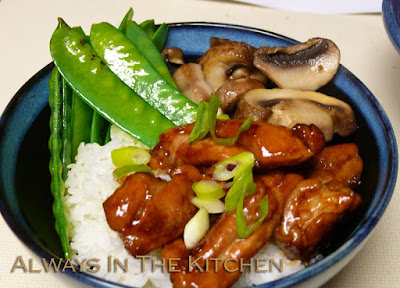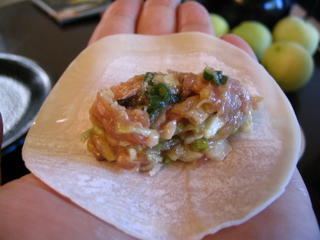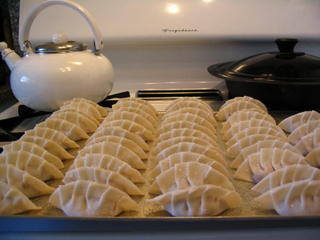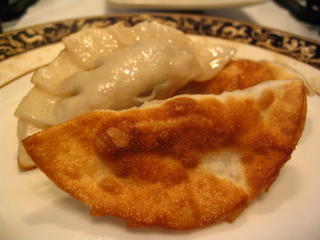
I'm a big fan of Mapo Tofu, a Sichuan dish that integrates small cubes of tofu into a spicy (think Sichuan peppercorn) flavourful minced pork sauce (or, if you want to get old-school, integrates spicy pork sauce into cubes of tofu) and served atop rice. Whether you lean more heavily to the meat-side or the tofu-side, it's a delicious meal. But wait! There's more.
While classic Chinese Mapo Tofu is very popular in Japan, Mapo Nasu is a localization that substitutes the tofu with eggplant. As with the original, there are a lot of versions vying for position as the ur-recipe, but that just means you can be very flexible in your approach.
I recommend long, narrow East Asian type eggplants, here, rather than the Mediterranean type, as they are generally less seedy and less bitter. The ones I used here were super skinny Japanese eggplants, the diameter of bratwurst, but wider ones work just fine (and are a bit less fragile). You can choose to sauté the eggplant strips in hot oil instead of broiling them, if you prefer, but they do tend to fall apart a bit more that way.
Mapo Nasu
Serves 2-3
Total prep and cooking time: 20 - 30 minutes
1/2 lb. lean ground pork or beef
2 tablespoons dry sherry or vermouth
1 teaspoon cornstarch
1/2 medium yellow onion, finely chopped
300 grams Japanese eggplant
1 teaspoon toasted sesame oil
Sauce ingredients
1 tablespoon fermented chile bean paste
1/2 teaspoon cayenne pepper or to taste (optional)
2 tablespoons less-sodium soy sauce
3 cloves of garlic, crushed
1 teaspoon minced fresh ginger
1/2 teaspoon white pepper OR ground Sichuan pepper
1/2 cup chicken broth
1 tablespoon cornstarch diluted in 1/4 cup water
If you're serving this over rice, get it started first, as it can wait patiently if need be. Preheat the broiler with a rack set 15cm/6inches from the burner.
Combine the meat, sherry, 1 teaspoon of cornstarch, and set aside. In a small bowl, combine sauce ingredients up to the white pepper and set aside.
Slice the leafy ends off the eggplant(s) and quarter the eggplant lengthwise. Slice the long spears of eggplant into finger-lengths, and brush with sesame oil. Place skin-side-down in a single layer on a baking sheet and broil for 7 - 10 minutes or until slightly browned and blistered. Remove from oven and keep to one side.
In a large skillet, over medium heat, cook the meat until evenly browned, breaking up any large clumps. Add the onion and cook until the onion turns translucent. Stir in the spicy sauce mixture until the meat is evenly coated. Add the eggplant and stir gently (you don't want to mash the tender pieces). Pour in the chicken broth and bring to a boil. Stir in the dissolved cornstarch and cook, stirring constantly but gently, for a couple of minutes until the sauce has thickened.
Serve over steamed rice with a green vegetable. May I suggest Kale Gomaae?


































